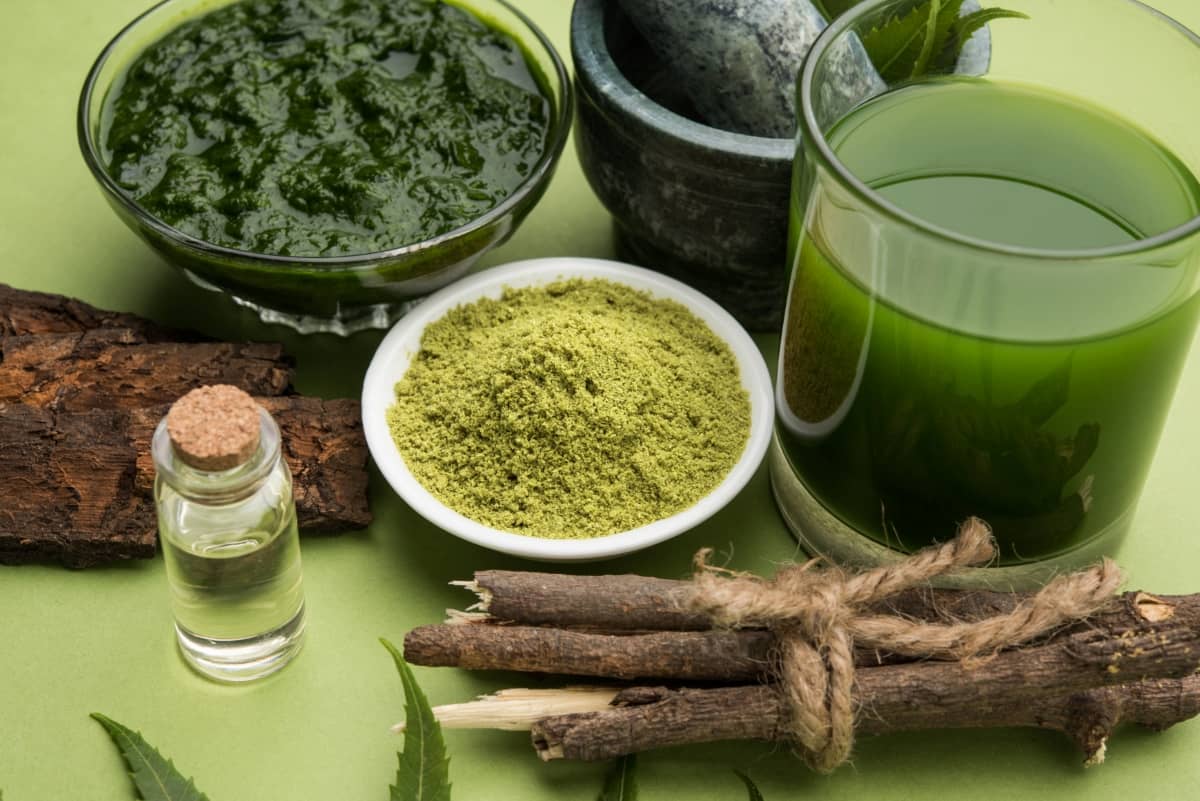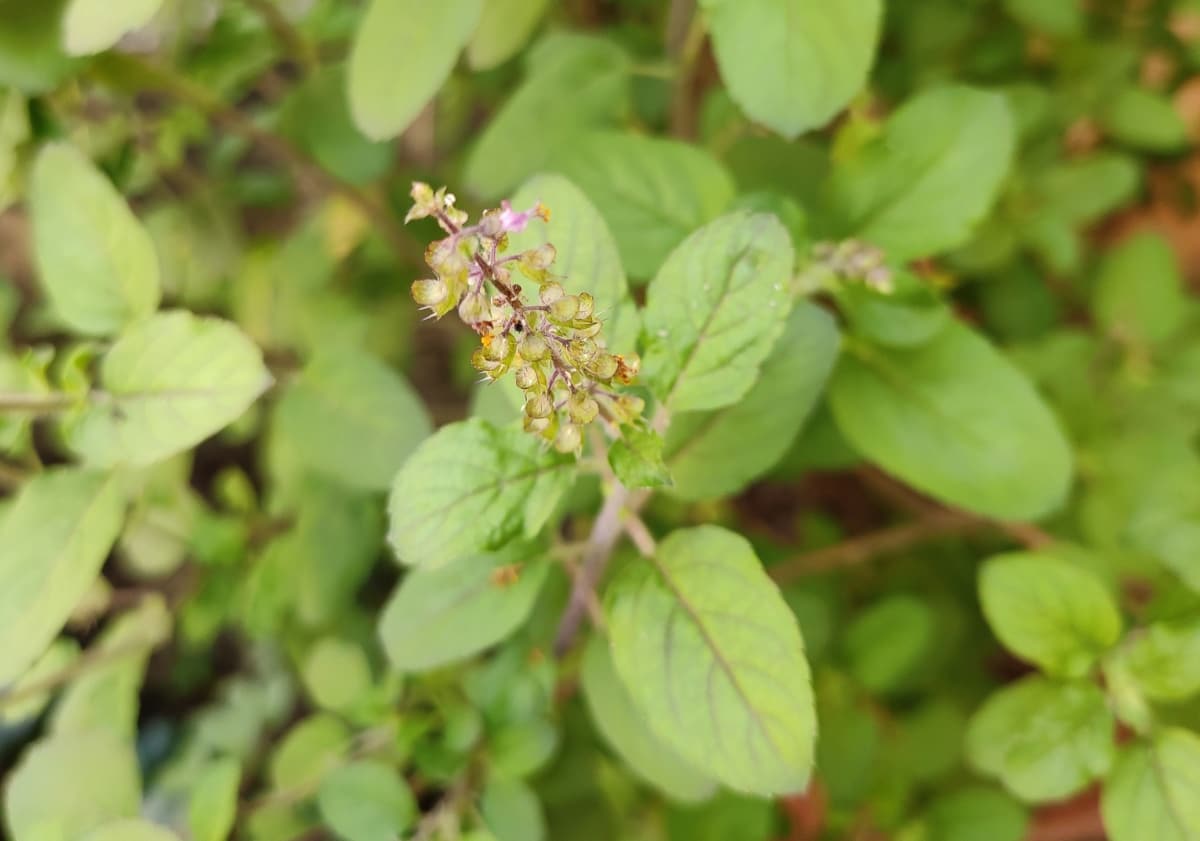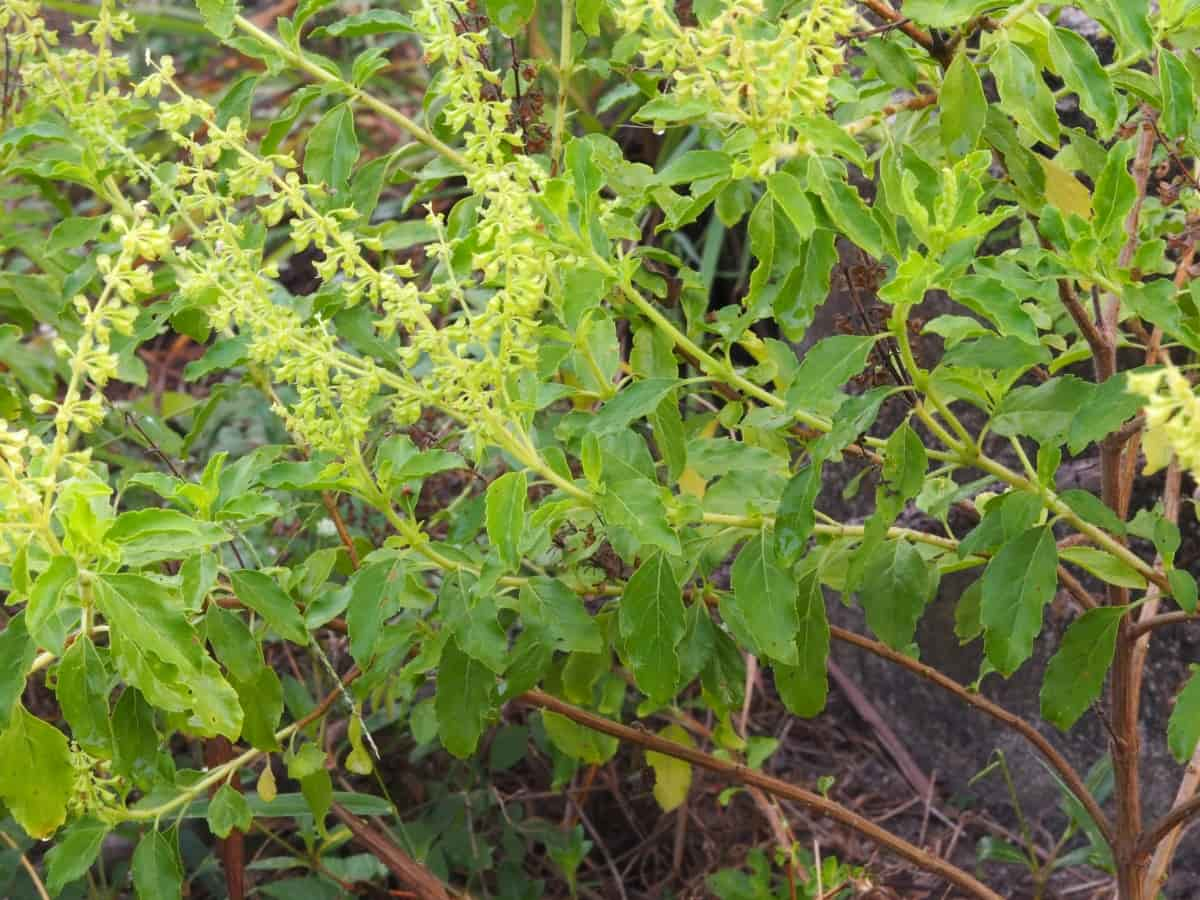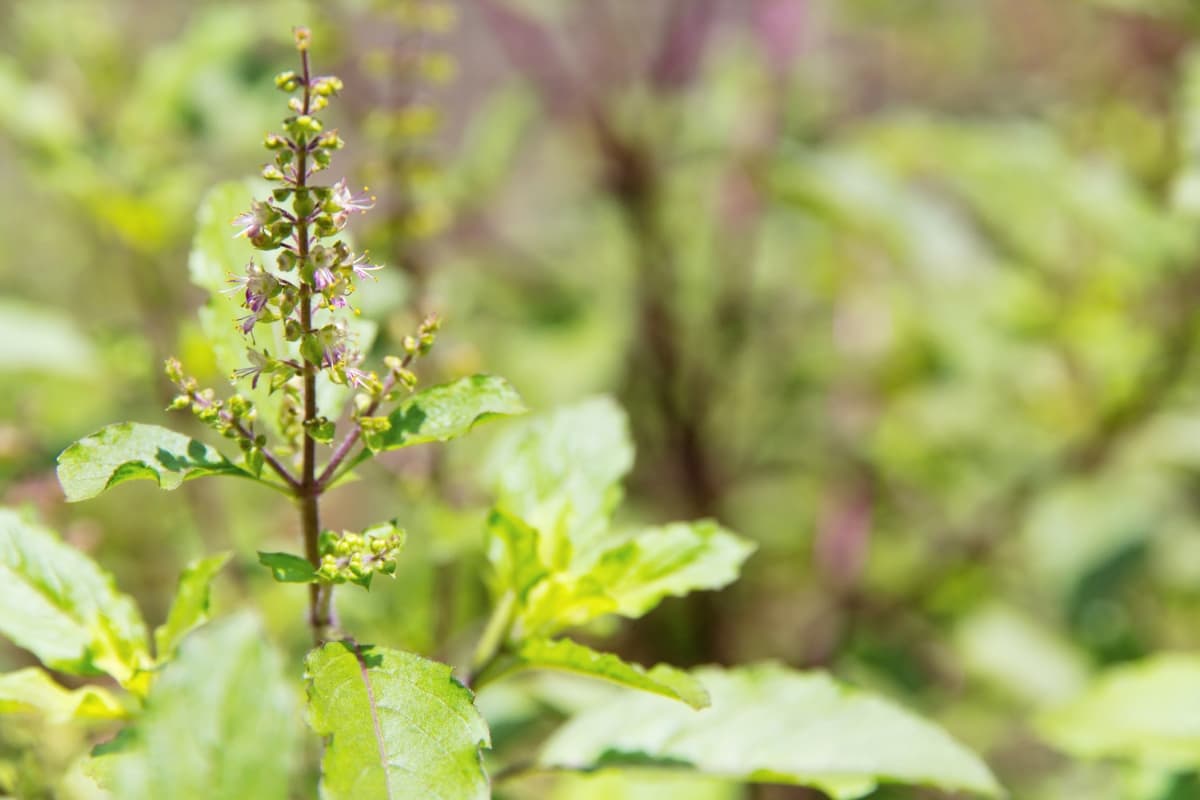Tulsi, also known as Holy Basil, is a sacred herb in many cultures and is renowned for its medicinal properties. However, like any plant, Tulsi is susceptible to various pests and diseases that can hinder its growth. Neem oil is derived from the neem tree’s seeds, and it is a natural and organic solution that can help protect Tulsi plants from various threats. Follow this step-by-step guide to keep Tulsi plants healthy and thriving by applying neem oil.

How to Use Neem Oil on Tulsi Plants
Benefits of Neem Oil for Tulsi Plants
Neem oil offers numerous benefits for Tulsi (Holy Basil) plants. Its natural pesticidal properties help control pests like aphids and mites, safeguarding the plant from infestations. Neem oil also acts as a potent antifungal agent, preventing diseases that can harm Tulsi. Additionally, it enhances soil fertility by acting as a biofertilizer, promoting overall plant health.
Neem oil’s organic composition makes it an eco-friendly solution, avoiding harm to beneficial insects and the environment. Regular application of neem oil on Tulsi leaves not only protects the plant but also nourishes it, ensuring robust growth and vitality. This holistic approach makes neem oil an invaluable asset for maintaining thriving Tulsi plants.
How to Mix Neem Oil for Tulsi Plants
To prepare a neem oil mixture for Tulsi plants, dilute 1 to 2 teaspoons of neem oil in a quart of lukewarm water. Add a small amount of mild soap liquid or insecticidal soap, around half a teaspoon, as an emulsifier to help the oil mix with water. Shake the mixture vigorously to ensure thorough blending.
Fill a spray bottle with the neem solution and evenly coat both sides of Tulsi leaves, focusing on the undersides where pests often reside. Apply the neem oil mixture during the cooler parts of the day or in the evening to prevent leaf burn. Repeat this application every 7-14 days or as needed, ensuring a consistent defense against pests and diseases while promoting the overall well-being of your Tulsi plants.
Instructions for Applying Neem Oil on Tulsi Plants for Pest Control
- Dilution Process: Mix 1 to 2 teaspoons of neem oil with a quart of lukewarm water. Add around half a teaspoon of mild liquid soap to aid emulsification. Shake the solution thoroughly for an even mixture.
- Application Technique: Use a spray bottle to apply the neem oil mixture, ensuring comprehensive coverage of both sides of the Tulsi leaves, especially the undersides where pests commonly hide.
In case you missed it: How to Use Neem Oil on Money Plant: Natural Ways to Get Rid of Bugs from Money Plants

When and How Often to Apply Neem Oil on Tulsi Plants
- Timing: Apply neem oil during the cooler parts of the day or in the evening to prevent potential leaf burn.
- Frequency: Repeat the neem oil application every 7-14 days or as needed. Consistent application is key to establishing a protective barrier against pests and promoting the overall health of your Tulsi plants.
How to Prepare the Tulsi Plant for Neem Oil Application
- Inspect the Plant: Before application, carefully inspect the Tulsi plant for any existing pests or signs of diseases. Remove any visibly damaged or infected leaves.
- Watering: Water the Tulsi plant a day or two before neem oil application. Hydrated plants are better equipped to absorb the neem oil solution.
- Timing: Choose an appropriate time for application, preferably during the cooler parts of the day or in the evening. This prevents the neem oil from causing leaf burn under direct sunlight.
- Mixing the Solution: Prepare the neem oil solution by diluting 1 to 2 teaspoons of neem oil in a quart of lukewarm water. Add a small amount of mild soap liquid as an emulsifier and shake the mixture well.
- Application: Use a spray bottle to evenly coat both sides of Tulsi evenly leaves with the neem oil solution, paying extra attention to the undersides where pests often hide.
Precaution for Applying Neem Oil on Tulsi Plants
- Always follow recommended dilution ratios to avoid potential harm to the plant.
- Before widespread application, test the neem oil solution on a small section of the plant to ensure there are no adverse reactions.
- Apply neem oil during cooler parts of the day to prevent leaf burn, avoiding direct sunlight.
- Maintain a regular but not excessive application schedule, typically every 7-14 days, to prevent buildup.
- By exercising these precautions, you ensure the safe and effective use of neem oil for the health and vitality of your Tulsi plants.
In case you missed it: How to Use Neem Oil for Scale Insect Control on Garden Plants Natural and Organic Solution

How to Identify and Treat Tulsi Plant Problems with Neem Oil
- Always follow recommended dilution ratios to avoid potential harm to the plant.
- Before widespread application, test the neem oil solution on a small section of the plant to ensure there are no adverse reactions.
- Apply neem oil during cooler parts of the day to prevent leaf burn, avoiding direct sunlight.
- Maintain a regular but not excessive application schedule, typically every 7-14 days, to prevent buildup.
Maximizing the Effectiveness of Neem Oil on Tulsi Plants
- Early Intervention: Begin neem oil applications preventatively or at the first signs of pest activity for optimal control.
- Thorough Coverage: Ensure comprehensive coverage by spraying both sides of Tulsi leaves, including the undersides where pests hide.
- Consistent Application: Stick to a consistent schedule, typically every 7-14 days, to maintain a protective layer and address emerging pest threats promptly.
Incorporating Neem Oil into a Regular Maintenance Routine for Tulsi Plants
- Scheduled Applications: Include neem oil applications as a routine measure during your regular plant care schedule.
- Observation: Regularly inspect your Tulsi plants for signs of pests or diseases, adjusting the neem oil application frequency as needed.
- Holistic Care: Combine neem oil with proper watering, soil nutrition, and sunlight to provide comprehensive care for thriving, pest-resistant Tulsi plants.
- Observation: Monitor plant health regularly, adjusting the neem oil application frequency based on seasonal variations and pest activity.
In case you missed it: Using Neem Oil in Rose Gardening: Natural and Organic Solution for Rose Pest Management

Conclusion
In conclusion, utilizing neem oil on Tulsi plants is a straightforward and effective process. By following the step-by-step guide, including proper dilution, thorough application, and consistent scheduling, you can protect your Tulsi from pests while promoting its overall health. Neem oil serves as a natural ally in maintaining thriving Tulsi plants.
- Types of Fungicides Used in Agriculture
- Common Issues in the Fruit Development Stage of Pomegranate Farming
- Fruit Development Issues in Papaya: Easy Solutions and Treatment
- Soil-Borne Diseases and How to Protect Your Plants
- Practices to Prevent Disease Spread in the Garden
- From Wilted to Thriving: How to Treat Root Rot Naturally in Houseplants
- Natural Remedies to Cure Brown Spots on Fig Tree Leaves
- Natural Solutions for Poinsettia Problems: 100% Effective Remedies
- How to Control Calla Lily Problems: Natural Remedies for Leaf and Flower Problems